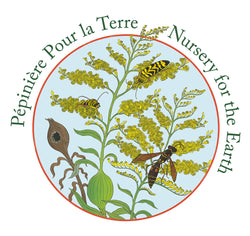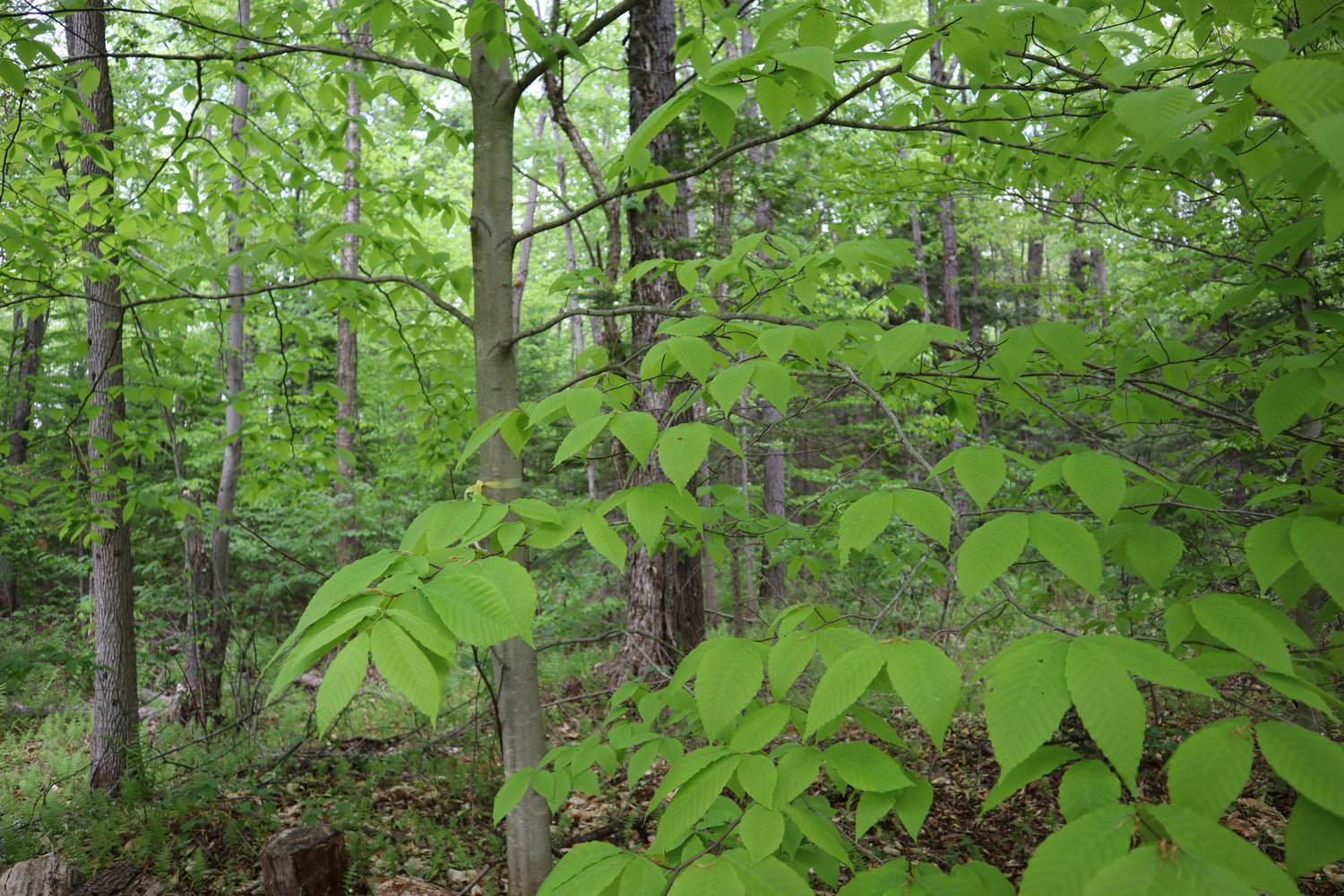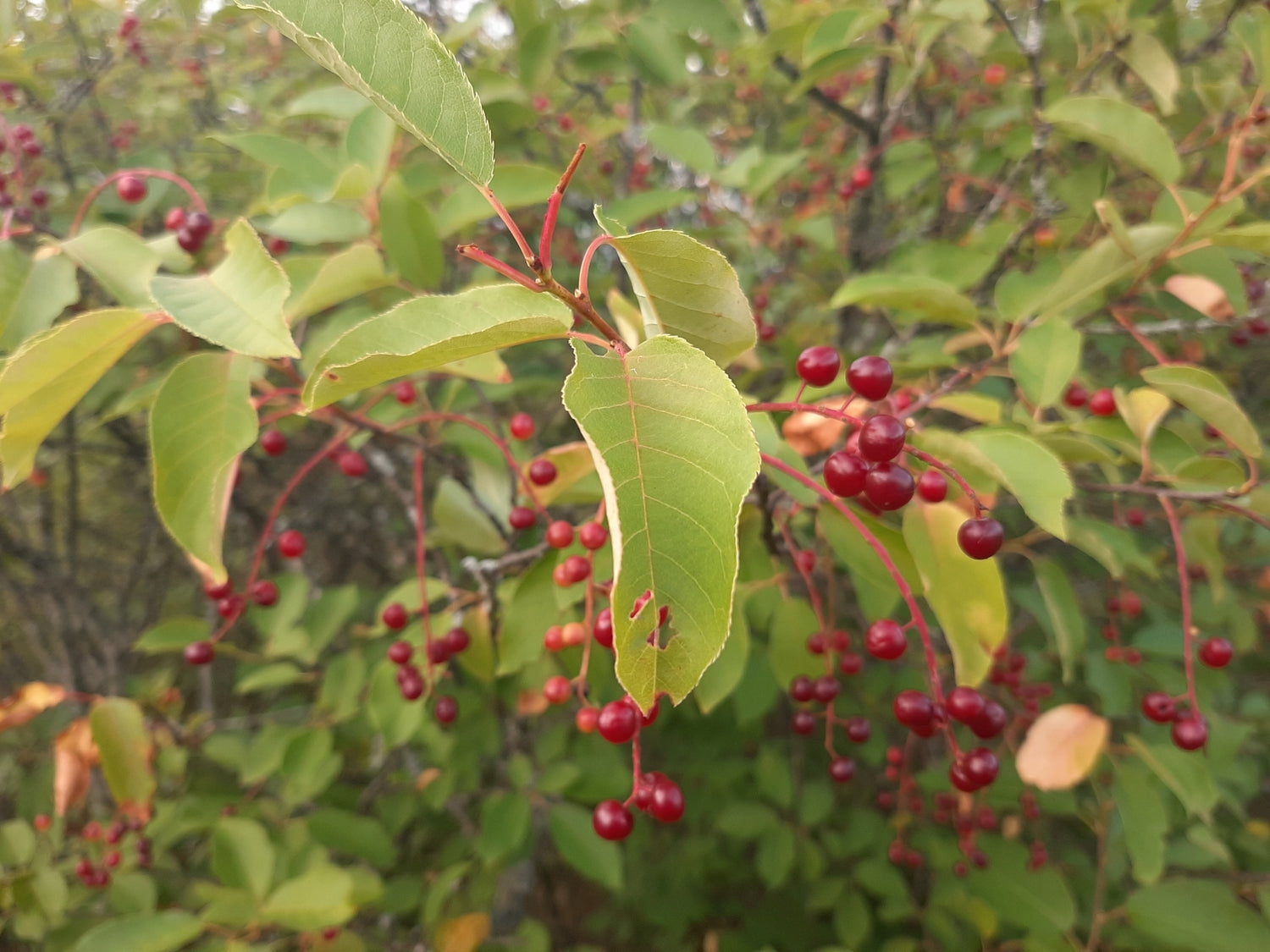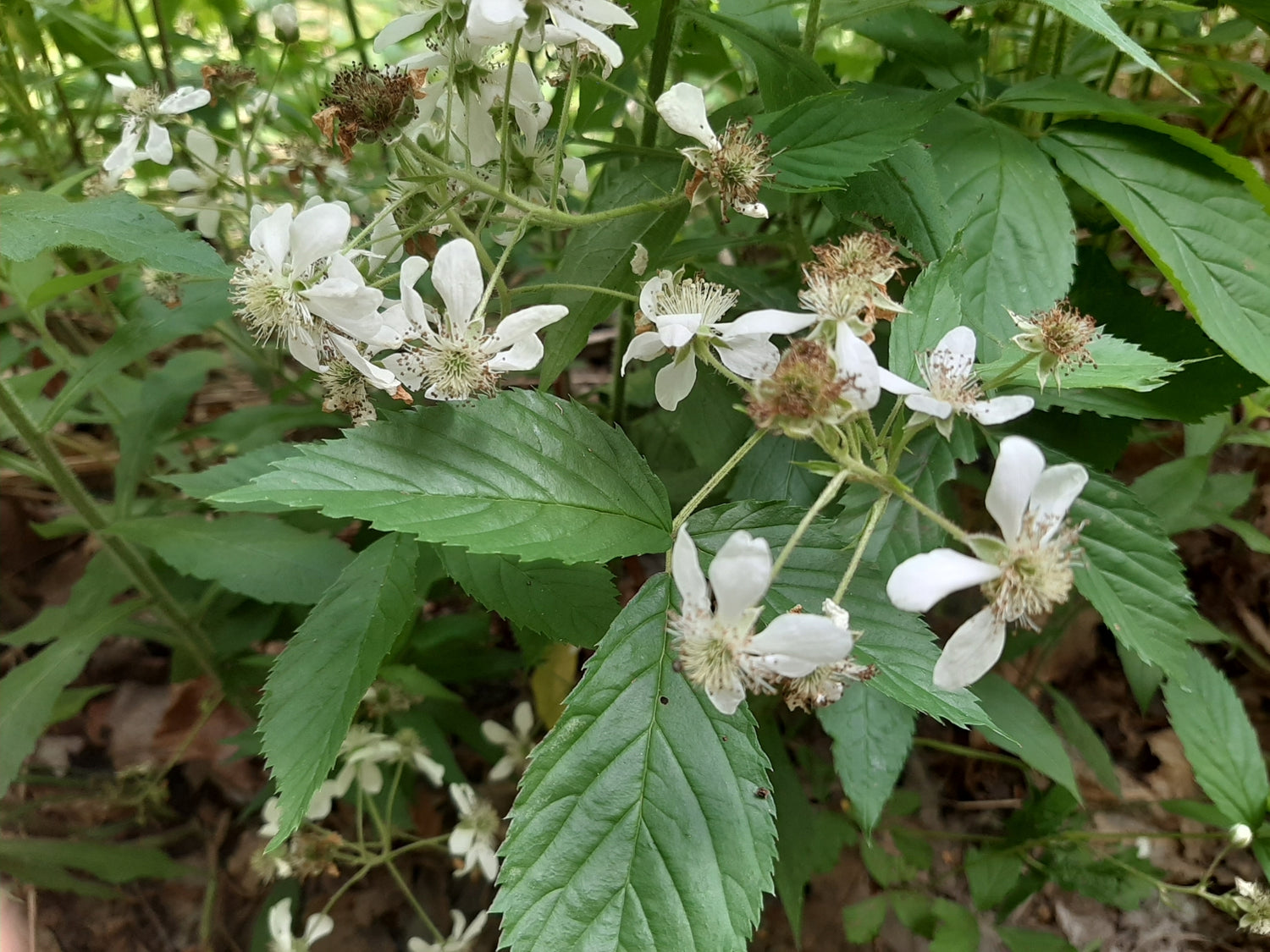Nursery for the Earth
Rubus allegheniensis (Fr: mûrier/ronce des Alléghanys | En: Allegheny blackberry)
Couldn't load pickup availability
The Allegheny blackberry (Rubus allegheniensis) is our most common native blackberry in the Ottawa Valley—and one of great ecologically valuable and taste! Often referred to as highbush blackberry for its upright, arching form, while this species spreads and can be a bit aggressive, it is a far cry from the invasive exotic blackberries that dominate vast areas ofdr Canada. This blackberry belongs here, and it behaves itself—spreading naturally without displacing native ecosystems.
Its tall, thorny canes form dense thickets in sunny forest edges, meadows, and disturbed areas. In early summer, it puts out beautiful five-petaled white flowers that are not just ornamental—they’re a magnet for pollinators including native bees, beetles, and butterflies. By late summer to early fall, the dark purple-black berries ripen, feeding wildlife and offering a sweet-tart treat for foragers.
Rubus allegheniensis is one of several native blackberry species, but stands out for its size, hardiness, and broad ecological role. Its thickets offer shelter, nesting habitat, and forage for birds and mammals. It's excellent for hedgerows, edible landscapes, and restoration projects where rugged, wildlife-friendly native shrubs are needed.
-
Height: 1.5–2.5 m (5–8 ft)
-
Spread: Spreads by suckers
-
Light: Full sun to part shade
-
Moisture: Moderate; drought-tolerant once established
-
Soil: Adaptable; prefers well-drained soils
-
Wildlife value: Outstanding – attracts pollinators, feeds birds and mammals, offers dense cover
-
Edible: Yes – juicy, richly flavoured berries good fresh or preserved
Share









